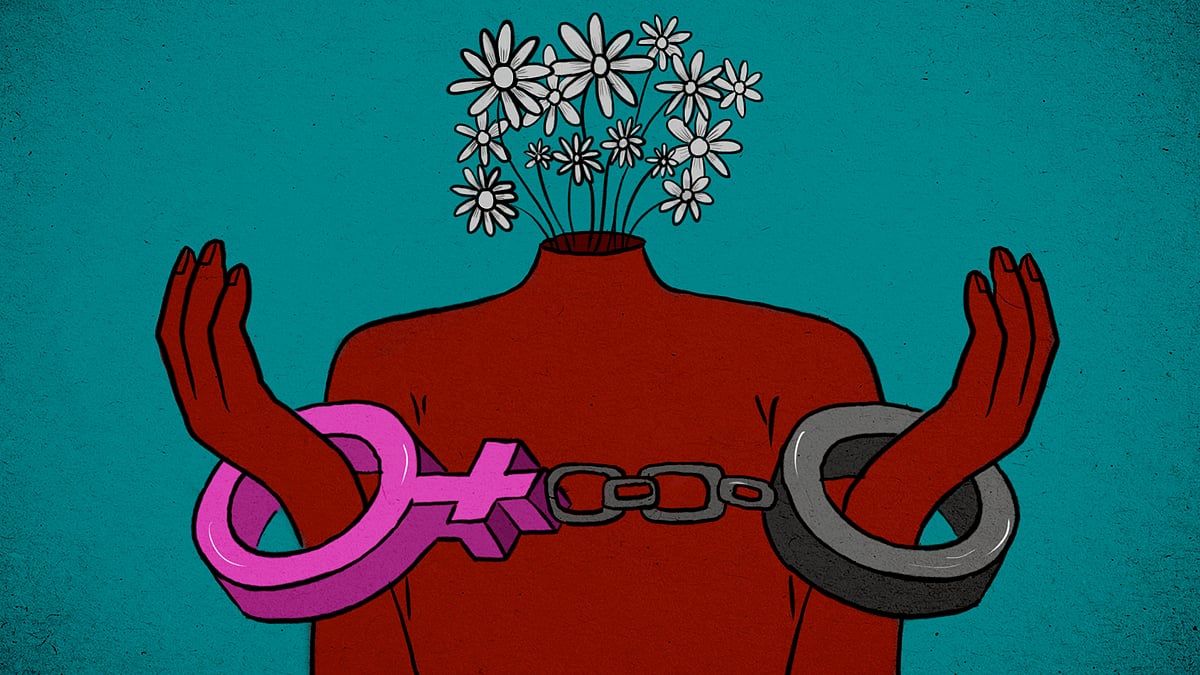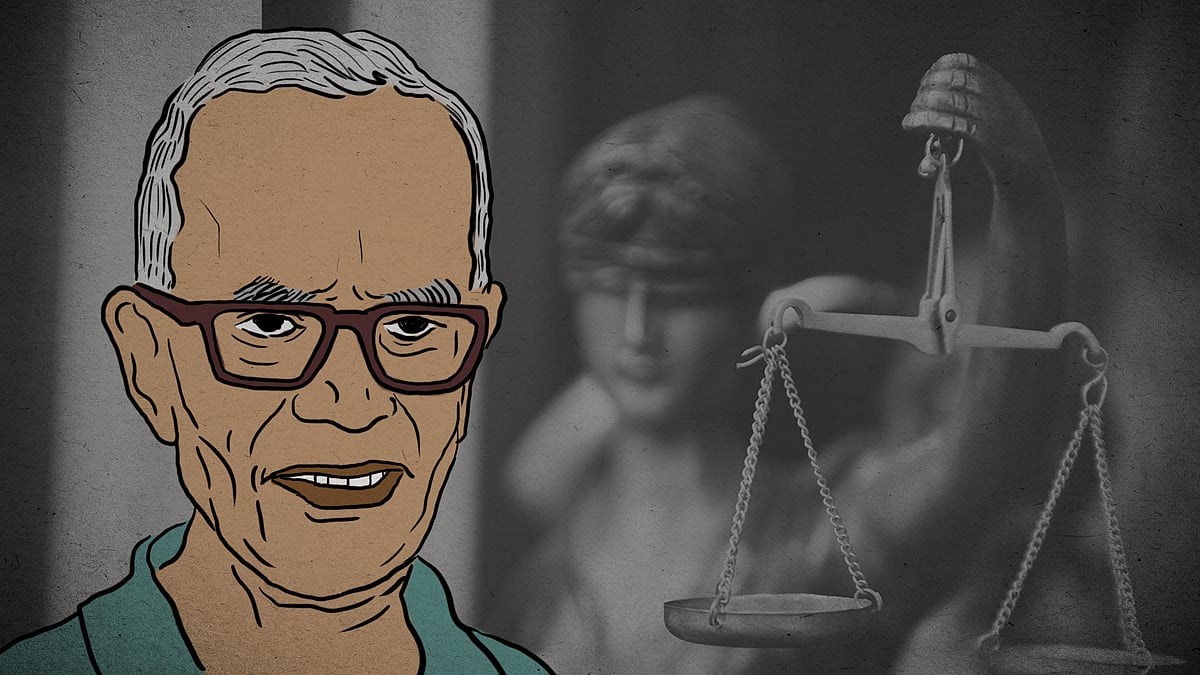Will mainstream media show the same attention to the Bhima Koregaon case as it did to Stan Swamy’s death?
Coverage cannot end with a few reports and editorials. There is a larger story that needs to be pursued.
In a time of constantly breaking news, when events such as the recent dramatic cabinet overhaul in the Modi government tends to sweep all other news off the front pages, it is imperative that the implications of Father Stan Swamy’s death in judicial custody are not forgotten.
On the afternoon of July 5, Father Stan, 84, died at the Holy Family Hospital in Mumbai. He was still in judicial custody in the Bhima Koregaon case, one of 16 who have been incarcerated without trial, charged under the draconian Unlawful Activities (Prevention) Act.
Father Stan's death represents more than the passing of a fine human being who gave his life for the welfare of Adivasis in Jharkhand, which he considered home. It forces us to think about the callous and cruel nature of the criminal justice system in this country as illustrated in this piece in the Wire by Susan Abraham, one of the lawyers fighting for the Bhima Koregaon accused and the wife of accused Vernon Gonsalves. It also ought to make us question the manner in which laws like the UAPA are increasingly being used to suppress all forms of dissent and interventions for the rights of the most marginalised.
While the Bhima Koregaon case itself has drawn sporadic interest in the media since 2018, when the first arrests were made, Father Stan's death has provoked an unexpected and strong response from national English language papers.
Not only were reports of his death on the front page of practically every leading national daily newspaper, but there were also strong editorial comments. While the Telegraph held that "the State is responsible for Stan Swamy’s death. But the shame of it and the loss it signifies are the Indian people’s", Times of India held the criminal justice system responsible and argued for revisiting provisions of the UAPA. The Hindu saw in the treatment meted out to Father Stan in prison "institutional oppression" and wrote that his death "will weigh on the country’s collective conscience for long". And Indian Express called the attitude of the courts in delaying and denying his legitimate plea for bail on medical grounds a "dark blot"; it concluded that his death "has left the highest institutions of India’s justice system diminished".
At the same time, it must be noted that on the whole, barring routine reports about the cases for bail filed by the 16 (now 15) men and women in the Bhima Koregaon case, the mainstream media did little to highlight the injustice meted out to them or investigate whether the case had any basis.
It was the Washington Post that broke the story about the malware planted on the laptops of Rona Wilson, one of the accused, and subsequently another report about the malware on the laptop of Surendra Gadling. If this is true, then the very basis on which these arrests were made will be proven as baseless. Neither of these stories created more than a ripple in the national media, although Sreenivasan Jain of NDTV did report on it in his programme Reality Check.
The point I am making is that the coverage given to this tragic death of an 84-year-old priest, cannot end with some reports and a few editorials. There is clearly a larger story that needs to be pursued, not just about the Bhima Koregaon case but also about the rampant misuse of the UAPA. Only weeks before Father Stan's death, Akhil Gogoi, who was elected to the Assam assembly while still in jail under the UAPA, was exonerated of all charges. Bashir Ahmad Baba from Srinagar was released after 11 years in prison after being acquitted under all charges under the UAPA. We also have the Delhi High Court judgement granting bail to Natasha Narwal, Devangana Kalita and Asif Tanha that draws attention to the misuse of this law.
According to the National Crime Records Bureau, only two percent of those arrested under the UAPA between 2015-19 have been convicted. The rest, one can assume, are still in jail. Each of them has a story that needs telling. Will at least those newspapers, which were moved to comment strongly after Father Stan’s death, take this on?
There is another death that took place a few weeks before Father Stan's that also calls for a pause and introspection about the kind of society we live in. That is the death of a 22-year-old woman in Kerala.
Vismaya from Kollam had been married for only a year to Kiran. Yet, despite complaining about the violence she experienced within the four walls of her home, she was persuaded to remain and give her marriage to an abusive man a chance. It ended with her death.
Within hours of the news about Vismaya, there were reports of a 24-year-old woman's death in Thiruvananthapuram. In both cases, there was a link to dowry.
The giving and taking of dowry was made illegal by the Dowry Prohibition Act in 1961. That made no difference. After campaigns by women's groups in the late 1970s and early 1980s, when newspapers particularly in Delhi carried routine reports about young brides dying in "accidental" kitchen fires, Section 498A was introduced in the Indian Penal Code making the unnatural death of a woman within seven years of marriage a cognizable offence.
Even this has made no difference. Despite the increasing levels of literacy amongst women, and their participation in the workforce, the scourge of dowry remains, and perhaps has become stronger if you go by this well-researched report by Haritha John in the News Minute. What then does this say about Indian society that in the 21st century, a woman's worth continues to be determined by the amount of gold and other "gifts" that her family sends with her to her marital home?
According to this article in Article 14, "Over 38% of murders of women are committed by current or former partners finds the National Crime Records Bureau (NCRB), and Indian women account for 36% of global female suicide deaths, finds the Harvard School of Public Health despite making up less than 18% of the world’s female population. Suicide is a leading cause of death among women aged 15-29 in India."
The article in the News Minute also raises several important points about the role of the media in perpetuating the prevalence of dowry. In the opinion of Burton Cleetus, an assistant professor of history at the Jawaharlal Nehru University, "When we enforce conventional marriages, the fundamental factor in it is wealth transfer. Though we romanticize marriage, it is basically a market for this wealth transfer. It is the same people and media who speak against the dowry system, who run matrimonial sites. It is the same media that promotes a luxurious lifestyle which creates a desire in people, a desire that is above our income. So on one hand, they promote consumerism, and on the other, they criticise these systems. This is pointless. All these are causes of the problem in a larger perspective.”
Whether one agrees with this analysis or not, it is evident that Vismaya's death has reminded us again how a woman's worth is calculated in modern day India. Economic progress, education, pro-women laws have failed to dent the patriarchy that ensures that most marriages remain a transaction. And the price for an unsatisfactory deal, as viewed from the man's side, is always paid by the woman. For every one report that comes to light, there would be thousands that are never reported.
These are the truths about our society that the media needs to report. Of the thousands unjustly incarcerated under laws that have no place in a democracy. Of an unjust, cruel and callous criminal justice system that denies bail even to the old and ailing. And of the way regressive, patriarchal values continue to ensure that women are treated as little more than a commodity.
 Kashmir interfaith marriage row: For politics of ‘hate’ and ‘honour’, a woman must perish
Kashmir interfaith marriage row: For politics of ‘hate’ and ‘honour’, a woman must perish Stan Swamy’s death must not be in vain. The NIA must present its ‘evidence’ against him
Stan Swamy’s death must not be in vain. The NIA must present its ‘evidence’ against him